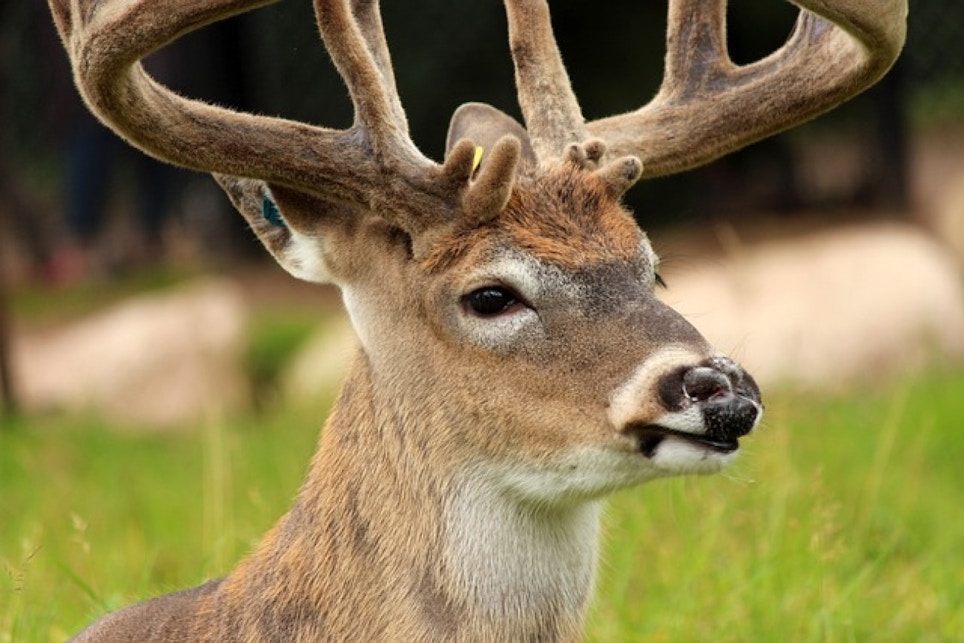According to the National Deer Association’s latest Deer Report, an average of 88 percent of whitetail deer are taken from private lands. “Most whitetails are found in eastern and southern states, and because the most hunters live where there is the least amount of public land, this new data underscores the conservation importance of deer hunting on private land,” said NDA Chief Conservation Officer Kip Adams, one of the report’s authors. The report includes an estimated 2021-22 season harvest of more than 5.9 million whitetails, with 5.2 million killed on private land, 700,000 on public ground. By region, the statistics show that the rate of private land harvest is 93 percent in the Southeast, 91 percent in the Midwest, and 81 percent in the Northeast. The report did not survey western states.
While this survey highlighted some other, at least to me, eye-opening facts (did you know, for example, that 12 out of the 31 reporting states allow holders of crop depredation permits to take antlered bucks, not just does, any time of year, under any circumstances, using the permits? Seriously?) what it underscores is that, at least for those who desire to hunt the most popular big-game animal in the Lower 48, if we want to keep hunting available for Joe Average, we need to aggressively begin doing two things. They are finding more ways to allow those without the deep pockets to buy land, lease exclusive hunting rights, or afford pricey outfitted hunts to access private lands, and to also acquire more public hunting land, especially in the east.
As a ham-and-egger who has done most of his hunting down through the years on public lands out West, I’ve also hunted in virtually every state in the nation, save Hawaii. I know a lot about how hard it is to find places to hunt on private ground and how today’s public hunting lands are being pounded. I also know how difficult it has become for the unattached sportsman to obtain permission to hunt private lands. The issue of public land hunting is a topic for another day. The question here and now is, how do we help hunters gain access to private ground without breaking their bank accounts?
It all comes down to the landowner, doesn’t it? At the end of the day, they’re in total control. If they choose to deny access to John Q. Public and save the hunting for their family and maybe a good friend or two, that’s the end of it. So, then, how can we incentivize them to open the gate and allow people to hunt their property?
It’s a complex problem with no one-size-fits all answer. State game departments recognize the problem, knowing that if hunter numbers continue to decline — the so-called COVID bump in license sales is over, with hunting license sales down 3.1 percent nationally in 2022 compared to 2021, and roughly only 4.6 percent of the overall documented U.S. population buys a hunting license annually — their budgets will crater. And so they’re trying different ways to stem the tide, with the so-called R3 (Recruit, Retention, Reactivation) programs at the forefront of their efforts. That’s all well and good. But at the end of the day, if those new or reactivated hunters don’t have a place to hunt — and not having a place to hunt is one of the biggest reasons folks give it up — what does it matter?
There are government programs that help. A related finding of the new NDA Deer Report showed that just 27 out of 47 states offer some sort of private-land hunting access program, with the greatest opportunity for new programs in the Southeast, where only three out of 11 states offered such programs in 2022, and where 93 percent of the deer harvest is on private land. On the federal level, the Voluntary Public Access and Habitat Incentive Program (VPA-HIP), administered under the U.S. Department of Agriculture, provides funding to help State and tribal governments encourage landowners to allow public access to their land for hunting, fishing, and other wildlife-dependent recreation. Individual states have their own programs as well. As an example, the Illinois Recreational Access Program, or IRAP, uses VPA-HIP grant funds to help private landowners protect and restore their land. Landowners who chose to lease their property to IRAP have a comprehensive habitat/forestry management plan written and are eligible for assistance to implement habitat restoration projects. That land is then opened up to public access.
It’s not just about big game hunting. For example, the federal Conservation Reserve Program, signed into law by president Reagan back in 1985, has proven that tying habitat conservation to hunter access works with private lands. And while approximately five million acres were enrolled in CRP programs in 2023, the number of acres that can be retired from agricultural production for CRP has been shrinking of late, much to the detriment of bird hunters and habitat across the Great Plains, and its future is somewhat iffy.
Personally, I’ve found it easier to access private ground when I take big game off the table, and confine my “ask” to upland birds, waterfowl, small game or turkeys. I also offer to help landowners with their chores, and once I get my foot in the door, I make sure I share my harvest with them. I also know that nothing’s forever, and sooner or later the door will probably close for myriad reasons that have nothing to do with me, so I’m always looking for new opportunities.
What’s your take? Are there ways you work connecting your customers with local landowners you can share with us? Is this a big issue where you live? Drop me a note at editor@grandviewoutdoors.com and let me know.






